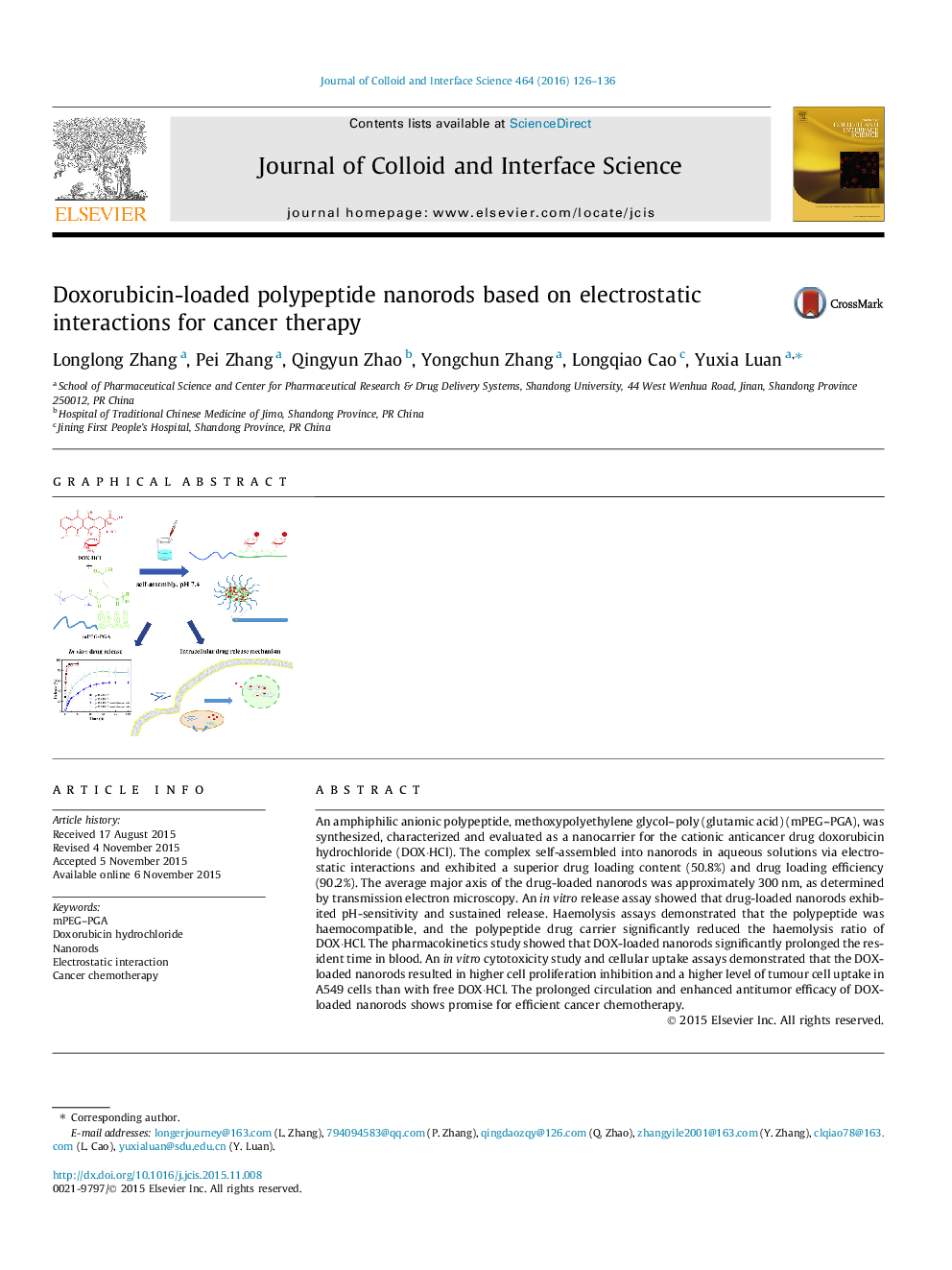| Article ID | Journal | Published Year | Pages | File Type |
|---|---|---|---|---|
| 606457 | Journal of Colloid and Interface Science | 2016 | 11 Pages |
An amphiphilic anionic polypeptide, methoxypolyethylene glycol–poly (glutamic acid) (mPEG–PGA), was synthesized, characterized and evaluated as a nanocarrier for the cationic anticancer drug doxorubicin hydrochloride (DOX·HCl). The complex self-assembled into nanorods in aqueous solutions via electrostatic interactions and exhibited a superior drug loading content (50.8%) and drug loading efficiency (90.2%). The average major axis of the drug-loaded nanorods was approximately 300 nm, as determined by transmission electron microscopy. An in vitro release assay showed that drug-loaded nanorods exhibited pH-sensitivity and sustained release. Haemolysis assays demonstrated that the polypeptide was haemocompatible, and the polypeptide drug carrier significantly reduced the haemolysis ratio of DOX·HCl. The pharmacokinetics study showed that DOX-loaded nanorods significantly prolonged the resident time in blood. An in vitro cytotoxicity study and cellular uptake assays demonstrated that the DOX-loaded nanorods resulted in higher cell proliferation inhibition and a higher level of tumour cell uptake in A549 cells than with free DOX·HCl. The prolonged circulation and enhanced antitumor efficacy of DOX-loaded nanorods shows promise for efficient cancer chemotherapy.
Graphical abstractFigure optionsDownload full-size imageDownload high-quality image (120 K)Download as PowerPoint slide
